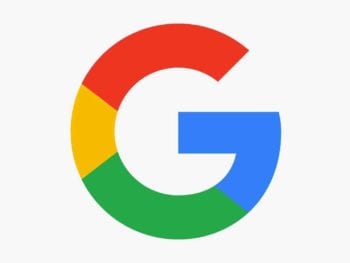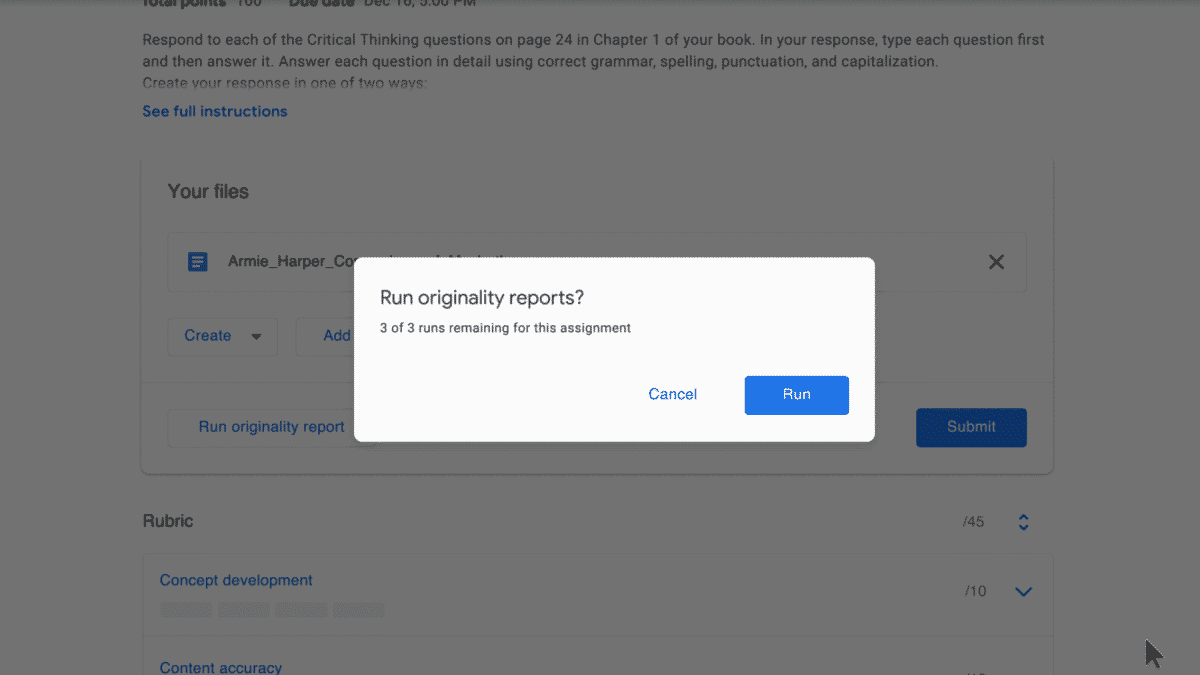Google Takes Originality Reports Out of Beta
The 500 lb gorilla enters the plagiarism detection market....
Disclosure: I am a paid blogger and consultant for Turnitin, a competitor in this space.

Back in August 2019, Google announced a new feature for its G Suite for Education service, Originality Reports.
A part of their Classrooms and Assignments tools, which were also announced at the same time, the products were put into beta and only a limited number of institutions were able to use them.
However, on Tuesday, Google announced that it was pushing the new service out of beta and making it available to all users of their Classroom product. This includes all users of G Suite for Education, whether they are on the free plan or the paid “Enterprise” version.
According to Google, they launched this product due to feedback from users, which said they, “copy and paste passages into Google Search to check if student work is authentic, which can be repetitive, inefficient and biased.” As such, they created their originality reports feature to make the process quicker and easier.
But, while Google may be late to the plagiarism detection game, their ubiquity in search makes them a player to note. However, it’s also worth noting that Google isn’t quite the new hat at plagiarism detection that these announcements make it seem.
When you peel back the layers, Google actually has quite a history in this field.
The Basics of Google Originality Reports

Anyone who has run any kind of originality report will be familiar with how Google’s system works.
When a student submits an assignment, Google generates an originality report that’s provided to the instructor for grading. It highlights passages that are duplicated but not cited correctly for the instructor to take note of.
As with all “plagiarism detection” tools it doesn’t detect actual plagiarism, just similar text. It’s up to the instructor (or another reader) to decide what is plagiarism and what is legitimate duplicate text (such as long titles, common phrasing, etc.)

One feature to note is that students are able to run their own originality reports before submitting assignments. Students can get up to three originality reports before submitting an assignment.
The goal is to give students enough access to help catch innocent mistakes, but not so much that they have infinite opportunities to rewrite a genuinely plagiarized work.
It’s also worth noting that the free version of Google G Suite for Education is limited to three assignments per class. Those that want or need unlimited assignments will have to pay for the G Suite Enterprise for Education version.
The move represents a major push for Google into this area and marks the first time Google has offered its own plagiarism detection software. That said, Google has long been involved with the industry, albeit not directly.
Google’s History in the Field

Though this represents the first whole plagiarism detection solution offered by Google, it’s hardly Google’s first involvement in the field.
As the most popular search engine, Google has long been one of the most popular plagiarism detection tools, especially for those wanting to do simple, quick and free checks. Simply input a statistically improbable phrase from the work you want to check into Google (using quote marks) and you can find duplicates of it online in seconds.
As Google noted in their announcement, this is exactly how many teachers look for plagiarism in student’s work when they don’t have access to other tools.
However, Google’s involvement goes much deeper than that. Many prominent plagiarism checkers are actually based on Google Search. CopyScape, for example, uses Google’s API to power its search functionality. Though it provides pre and post-processing of the results, which is crucial to its functionality, it’s ultimately Google’s results that identify duplicates.
Many plagiarism checkers use Google as either all or part of their backend and the Google Search API makes this relatively easy to do.
So, while this may be Google’s first whole plagiarism checker, it’s an industry they’ve been adjacent to for a very long time and should have a good familiarity with. Despite that, it has some challenges ahead of it as it tried to break into it.
Looking Ahead
Despite Google’s presence in the field, it’s clear that they are well behind others in the field in terms of introducing a complete product. That may pose challenges for them.
Turnitin, for example, first introduced their tool in 2000. Blackboard introduced its tool, SafeAssign, back in 2007. Both services have a significant head start in this area.
And that becomes evident when we look at what the various services are working on. Turnitin, for example, has introduced a new tool named Authorship to tackle contract cheating. Unicheck has a similar system named Emma. They both work by analyzing a sample amount of writing known to belong to a student and determining how likely a new piece of writing belongs to the same person.
Google’s service is largely (at least in terms of on-paper features) even with services that have been available for years or decades. The academic integrity landscape is moving forward and what Google introduced today is almost backward-looking compared to what we’re seeing elsewhere.
To make matters worse, the service introduced today doesn’t even have a feature to check student papers against each other (that is currently in beta) and they are also beta testing additional languages for the tool. Though those features are on the way, their omission at release is worrisome as many schools depend on such tools.
That said, Google likely doesn’t want or need to create the best and most modern originality checking tool. The goal here is to round out the G Suite for Education offering and it does do that well. Also, as a leader in the AI space, it’s always possible Google could seize the opportunity and catch up very quickly.
Simply put, Google is a giant in any field it enters, even when it does it late.
Bottom Line
The success or failure of Google’s Originality Reports will hinge on the overall success of the G Suite for Education product. Their foray into plagiarism detection is just one part of a multi-front push into the education market. If that push succeeds, Originality Reports will succeed.
This is a field with a lot of established players and the product Google introduced is definitely one that’s been available elsewhere for a long time. While it was important for Google to have this feature in its G Suite for Education product, it isn’t exactly changing the landscape yet.
Still, this may be exactly the product that many educators are waiting for, especially considering there is a limited version of the tool available for free. For some, it may simply be good enough, especially in the K-12 market.
In the end, only time will tell if Google’s push into this market pays off. It is also the only thing that will tell how powerful this tool will become.
No matter what, when Google enters a new market, everyone pays attention. This one is no different.
Want to Reuse or Republish this Content?
If you want to feature this article in your site, classroom or elsewhere, just let us know! We usually grant permission within 24 hours.
